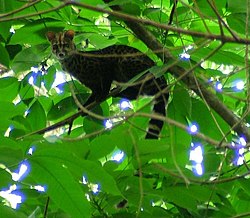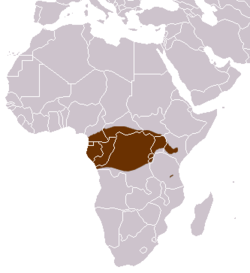| Servaline genet | |
|---|---|
 | |
| Scientific classification | |
| Kingdom: | Animalia |
| Phylum: | Chordata |
| Class: | Mammalia |
| Order: | Carnivora |
| Family: | Viverridae |
| Genus: | Genetta |
| Species: | G. servalina |
| Binomial name | |
| Genetta servalina Pucheran, 1855 | |
 | |
| Servaline genet range | |
The servaline genet (Genetta servalina) is a genet species native to Central Africa. As it is widely distributed and considered common, it is listed as Least Concern on the IUCN Red List. [1]
